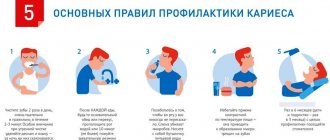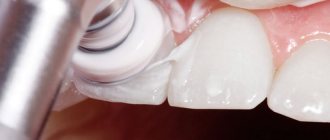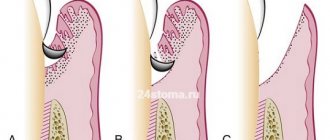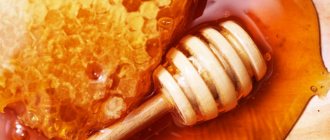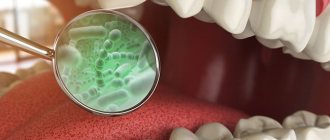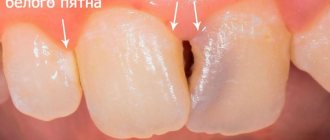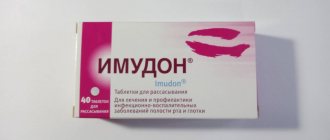The best protection against STIs is careful selection of sexual partners. If there are problems with this, a condom is required. Although it does not give a 100% guarantee, because it may break. Also, the risk of STDs will remain with foci of infection in open areas of the body.
Timely prevention after such contact will prevent infection. In severe cases, you will need to take strong antibiotics to stop the growth of bacteria. The type and duration of treatment is selected by the doctor based on test results.
What is Chlorhexidine used for?
An aqueous solution is prescribed to be taken in the following cases:
- cervical erosion;
- for the prevention of syphilis, genital herpes and other vaginal diseases;
- disinfection of dentures, disinfection of wounds;
- various diseases of the oral cavity.
An alcohol solution is used to treat hands and medical devices before surgery. The solution is also used to treat the working surface of medical equipment.
Vaginal suppositories are effective for the following conditions:
- in order to prevent infections that can be transmitted as a result of unprotected sexual intercourse;
- bacterial vaginosis;
- prevention of inflammation and infections before surgery, childbirth or abortion.
Medicines against STDs
There are no universal pills that will save you from any type of sexually transmitted infections. Therefore, the choice of preventive measures should be made by a doctor. Vaccinations are used against viruses that cause HPV, hepatitis B or genital herpes. Personal intolerance to the components of the vaccine is possible.
The option is suitable for STI insurance, but not for emergencies. After a casual relationship, medication may be required. Prevention or treatment should be given to both partners to prevent re-infection and spread of sexually transmitted diseases.
How to use Chlorhexidine in gynecology
The product is actively used to prevent sexually transmitted diseases. No later than 2 hours after unprotected intercourse, you need to take the solution. Men will need to insert 2 ml into the urinary canal, and women will need to insert 2 ml into the urinary canal and another 5-7 ml into the vagina. It is recommended to wipe the skin around the genitals with the solution. The instructions say that after using the drug you need to wait 2 hours before urinating. Otherwise, the effect of use will be less.
For preventive purposes, vaginal suppositories can be used.
Before using the product for thrush and other gynecological pathologies, you should consult a specialist in advance.
Disinfectants
- Chlorhexidine or Miramistin. Designed to prevent damage to mucous membranes by STDs. For men, the kit includes a special attachment. Women are recommended to use douching.
- Hexicon. Suppositories for women, active ingredient – chlorhexidine. The product will provide protection against gonococci, herpes virus, chlamydia, streptococci, E. coli and staphylococci. Not suitable for prophylaxis in patients with high sensitivity to chlorhexidine.
- Betadine. These are vaginal suppositories with povidone-iodine. Needed to protect against fungi, viruses and bacterial diseases that are sexually transmitted. The drug is not addictive, is poorly absorbed into the blood, and there are few contraindications. Prophylaxis is not recommended for iodine sensitivity and thyroid dysfunction.
The listed measures to prevent various STIs only reduce the likelihood of infection by 2-3 times, but do not provide a guarantee. Therefore, emergency treatment should be carried out in rare cases, and not become part of a regular ritual. Infection can be detected as early as day 3, so don’t delay going to the doctor.
Antiseptic drugs should not be used too often, such prevention will only do harm. Disinfecting compounds destroy both STD pathogens and beneficial bacteria, leading to an imbalance. To restore it, additional treatment will be required; without this, the risk of STDs will increase several times.
Contraindications and adverse reactions
Taking the drug is contraindicated in the following cases:
- increased susceptibility to the components included in the composition;
- patients with dermatitis;
- simultaneous use with other antiseptics, for example, hydrogen peroxide;
- in ophthalmology for washing the eyes.
It is better to refrain from using the product to disinfect the surgical field before or after surgery on the central nervous system and auditory canal.
In pediatrics, the drug is used with great caution.
Some patients may experience undesirable reactions such as:
- dry skin;
- allergic skin rashes;
- itching of the skin;
- light sensitivity.
With prolonged use of the product in dentistry, changes in taste may occur, tartar may appear, or teeth may become stained.
Antibiotics
- Ticarcillin, Oxacillin and Ampiox. These are drugs of the penicillin group that are used to treat syphilis. Medicines dissolve quickly in the stomach, which is why they are often prescribed as injections into a vein or muscle.
- Sumamed, Azithromycin, Erythromycin. Used if the STI cannot be eradicated with penicillin. Macrolides are effective against syphilis, chlamydia and gonorrhea, and have few contraindications and side effects. To combat sexually transmitted infections, they are prescribed in the form of tablets or injections.
- Ceftriaxone, Ceftaroline, Cefixime and Cefpirome. Antibiotics work against a number of STDs: gonorrhea, pathogens and syphilis. Cephalosporins have a strong effect, prevention with their help is carried out under strict control. Injections are prescribed to treat STIs.
- Ofloxacin and Norfloxacin. Used for the prevention and treatment of chlamydia and gonococci. The drugs are suitable for long-term use and have several release forms. They are included in the treatment regimen for varying severity of STDs.
- Oxytetracycline, Tetracycline and Doxycycline. Powerful antibiotics that have a toxic effect on the body. Rarely prescribed for prophylaxis. They are used only in cases of severe STDs, when drugs from other groups have not helped. They fight complicated gonorrhea, syphilis and chlamydia. Treatment of STIs with these drugs can cause increased intracranial pressure, severe allergies, and digestive problems. For this reason, they are administered only intravenously.
- Orinidazole, Metronidazole. Used for the prevention and treatment of trichomoniasis. Their toxicity is assessed as moderate. Suitable for the comprehensive fight against STDs, they are available in the form of suppositories and tablets.
- Gentamicin, Nemicin, Spectomycin and Amikacin. Administered intramuscularly. Needed for the prevention of gonorrhea and treatment of latent STDs. Also used to eliminate severe forms of sexually transmitted diseases.
Prevention after an unprotected act does not exceed 7 days. The duration is selected by the doctor depending on the type of STI and the severity of the lesion. All antibiotics have a negative effect on the body. Therefore, their use is combined with the use of antifungal drugs. If there are problems with digestion, probiotics are additionally prescribed.
Composition of Chlorhexidine
The composition of the drug is 0.05% solution
Chlorhexidine bigluconate includes 0.5 mg
of chlorhexidine bigluconate
, additional substances.
The composition of the drug is 20% solution
Chlorhexidine Bigluconate includes 0.2 g of active substance, additional substances.
Release form
INN: Chlorhexidine
The form of release of the product is as follows. The drug is available in the form of a 0.05% solution for external use. In a polymer bottle with a nozzle, as well as in glass bottles of 100 ml, 1 bottle in a cardboard package.
A 20% solution of the drug is sold in polymer bottles with a cap, 100 ml, 500 ml.
Suppositories and gel are also produced (it contains lidocaine
), cream, ointment, spray with a similar active ingredient.
pharmachologic effect
An aqueous solution of Chlorhexidine Bigluconate has a local antiseptic effect, predominantly bactericidal. The product is a dichlorine-containing biguanide
. It affects the body by changing the properties of the cell membrane of microorganisms. The cations that are formed due to the dissociation of chlorhexidine salts react with the bacterial membranes, which have a negative charge. The effect of the drug promotes the destruction of the cytoplasmic membrane of the bacterium. Its balance is disrupted, and the bacterium eventually dies.
Chlorhexidine Bigluconate solution 0.05%, gluconate 20% effectively destroys a number of strains of microorganisms. This is Neisseria gonorrhoeae
,
Trichomonas vaginalis
,
Bacteroides fragilis
,
Chlamidia spp
.,
Gardnerella vaginalis
,
Treponema pallidum
.
The drug is also active against Ureaplasma spp
., and also has a moderate active effect against individual strains of
Proteus spp.
and
Pseudomonas spp
.
Viruses demonstrate resistance to the drug (with the exception of the herpes
), fungal spores.
If a rinse with Chlorhexidinum is used to wash hands, or the skin is treated with the drug, Chlorhexidine Bigluconate has a long-term antibacterial effect. Therefore, the drug can be used to treat the surgeon’s hands and the surgical field.
The product retains its antimicrobial activity in the presence of pus, blood, etc., but a decrease in its effectiveness is noted.
Pharmacodynamics and pharmacokinetics
When applied topically, Chlorhexidine is not absorbed into the bloodstream and has no systemic effect.
Indications for use
What the antiseptic is used for can be found in the detailed instructions for the drug. It is widely used to treat diseases that are caused by microorganisms sensitive to the influence of Chlorhexidine, and for their prevention.
The medicine is used to treat certain diseases depending on the concentration of the solution.
A solution of 0.05%, 0.1% and 0.2% is widely used to prevent infectious diseases after surgical interventions. The use of such solutions in dentistry is practiced in order to process dentures. Dentists determine how to use Chlorhexidine in dentistry during various procedures, and also use it for stomatitis.
,
periodontitis
for rinsing gums.
Skin treatment is practiced in urology (if penetration into the urethra, etc.), surgery, and gynecology before and after surgery to prevent infection. The use of the product in gynecology is practiced for the purpose of disinfecting mucous membranes and skin before carrying out a series of manipulations. How to use the solution depends on the type of procedure or manipulation.
In gynecology, Chlorhexidine is also used for thrush. To get rid of thrush, a woman is recommended to douche according to a special scheme.
Chlorhexidine is used in the treatment of many dermatological diseases of both bacterial and fungal origin. The use of the drug is also indicated in the presence of purulent wounds, diseases of the mucous membranes provoked by microorganisms sensitive to the active substance of the drug.
What Chlorhexidine is is known to those who have been seriously injured. The product is often used to treat wounds and damaged skin to prevent infection. What it is, and whether it is worth using the product in a particular case, is determined by the doctor.
Chlorhexidine Bigluconate solution is used to prevent sexually transmitted diseases - genital herpes
,
chlamydia
,
trichomoniasis
,
syphilis
,
gonorrhea
.
Chlorhexidine Bigluconate solution 0.5%
used to treat damage to mucous membranes and skin, as well as for the treatment of medical instruments (the solution temperature should be 70 degrees Celsius).
Chlorhexidine Bigluconate solution 1%
used to prevent infection of burns and wounds, for disinfection before operations, as well as for treating instruments and devices that cannot be subjected to heat treatment.
Chlorhexidine Bigluconate solution 5% and 20%
used in the preparation of solutions based on water, glycerin or alcohol.
Contraindications
The following contraindications to the use of this product are noted:
· High sensitivity to the components of the product.
· Not used to treat patients suffering from dermatitis
.
· Do not use at the same time with other antiseptics (this is hydrogen peroxide
and etc.).
· It is not advisable to use it for disinfection of the surgical field before surgery or after interventions on the central nervous system and auditory canal.
· Not used in ophthalmology (the answer to the question whether it is possible to wash the eyes with this product is negative, since in ophthalmology only a specially prepared solution is used).
· For the treatment of children, use with caution.
Side effects
When using Chlorhexidine Bigluconate during treatment, the following side effects were observed in some patients:
· dry skin;
· itchy skin
;
· appearance of a rash;
· dermatitis
;
· photosensitivity.
With prolonged use of mouth rinses and mouthwashes, taste sensations may change and tartar
, there is a change in the color of the teeth.
Instructions for use Chlorhexidine Bigluconate (Method and dosage)
The instructions for Chlorhexidine stipulate that aqueous and alcoholic solutions of Chlorhexidine are used for the local treatment of infectious diseases.
Instructions for use of Chlorhexidine Bigluconate for the prevention of sexually transmitted diseases are as follows. A 0.05% solution is used no more than two hours after unprotected sexual intercourse. For men, 2-3 ml of the product is injected into the urinary canal, for women, 1-2 ml is injected into the urinary canal and another 5-10 ml into the vagina (like douching in gynecology). It is also advisable to treat the skin near the genitals with the solution. The instructions on how to use the drug in this case contain a warning that urination should be done no earlier than 2 hours after using the drug. Otherwise, the effectiveness of the action decreases.
For prevention in this case, suppositories with Chlorhexidine Bigluconate can also be used.
How to do Chlorhexidine douching for thrush
and other gynecological diseases, and whether it is possible to douche when certain symptoms appear, you should definitely check with your gynecologist first. For douching, a ready-made solution of 0.05% is used, which does not require additional dilution. Before douching, you need to lie down horizontally and, after squeezing a few drops of the product from the bottle into the vagina, lie down for a few minutes. If allergic reactions develop, such procedures should not be performed.
The method of using Chlorhexidine for inflammatory diseases of the urinary tract is as follows: 2-3 ml of 0.05% is injected into the urinary canal once or twice a day. The course of treatment lasts 10 days. This method of application is practiced in men and women.
To treat burns, wounds and other skin injuries, a solution of the drug 0.05%, 0.02% or 0.5% is used. It is used for irrigation or applications. The application is left for a period of 1 to 3 minutes. A spray with a similar active ingredient can also be used.
If it is necessary to disinfect the skin before surgery, use a 20% solution of Chlorhexidine digluconate, which is diluted with 70% ethyl alcohol (1 part of a 20% solution of Chlorhexidine digluconate and 40 parts of 70% alcohol). The surgical field is treated twice with an interval of 2 minutes.
In ENT practice, Chlorhexidine is used for sore throat
,
pharyngitis
,
tonsillitis
. If you have a sore throat, you should gargle with a solution of 0.2% or 0.5%.
Before using Chlorhexidine gargle
, it is recommended to rinse your mouth thoroughly with warm water. Next, gargling for a sore throat is carried out as follows: you should take 10–15 ml (about a tablespoon) of the solution, which can be used to gargle for about 30 seconds. You can repeat these steps one more time. After rinsing, it is advisable not to take food or liquid for 1 hour. The doctor will tell you how to gargle with Chlorhexidine, as well as how many times a day you need to perform this procedure for the throat, taking into account the patient’s individual symptoms. You should also ask the specialist whether it is possible to gargle with Chlorhexidine if the patient notices side effects.
It should be noted that if rinsing your mouth with Chlorhexidine causes a burning sensation, then most likely the solution is too concentrated. The highest permissible concentration is no more than 0.5%. You must first study the instructions on how to dilute the medicine for mouth rinsing. After teeth extraction, rinse your mouth three times a day for 1 minute. Is it possible to rinse your mouth more often and how to rinse your mouth if complications are noted after tooth extraction, you need to find out from a specialist.
Chlorhexidine solution should not be swallowed while rinsing; if the solution accidentally gets into the stomach, you need to drink activated carbon tablets (1 tablet per 10 kg of person’s weight).
Nasal rinsing for sinusitis
This drug should not be practiced on its own. Whether it is possible to rinse the nose is determined solely by the doctor. A solution taken into the nose can enter the cavity of the inner ear or onto the lining of the brain, which is fraught with the development of serious complications.
Overdose
According to the instructions, an overdose of the drug is impossible. If the drug is swallowed, gastric lavage
, use of
activated carbon
, symptomatic treatment.
Interaction
If the pH of the medium exceeds 8, a precipitate forms. If hard water was used when preparing the solution, its bactericidal effect is reduced.
Does not combine with anionic compounds, in particular soap.
Does not mix with chlorides
,
carbonates
,
phosphates
,
sulfates, borates
,
citrates
.
of neomycin increases
,
kanamycin
,
chloramphenicol
,
cephalosporin
.
Ethyl alcohol enhances the bactericidal effect.
Terms of sale
Sold in pharmacies without a doctor's prescription.
Storage conditions
The drug should be stored in a dark, dry place, storage temperature - from 1 to 25 degrees Celsius.
Best before date
Solution 0.05%
can be stored for 2 years.
Solution 20%
can be stored for 3 years.
Prepared solutions can be stored for 1 week.
special instructions
The solution remains active in the presence of blood and organic substances. Contact of the drug with the eyes, membranes of the brain and the auditory nerve should be prevented.
In people with open TBI
, damaged spinal cord,
perforation of the eardrum,
it is necessary to avoid getting the product on the surface of the brain, meninges, and also into the tympanic cavity.
If the drug gets into your eyes, rinse them immediately.
It is not recommended to mix with other detergents and disinfectants.
If clothing has been in contact with the product, do not expose it to hypochlorites.
, producing active chlorine.
Analogs
Analogs of Chlorhexidine Bigluconate are drugs that contain a similar active substance. Analogues are available in the form of different dosage forms - gels, solutions, ointments, suppositories. This is Hexicon
,
Hexicon D
(for children),
Hibiscrub
,
Amident
, etc.
Other antiseptics, such as iodine or hydrogen peroxide, can also be used.
Which is better: Chlorhexidine or Miramistin
?
Many people are convinced that Miramistin
and Chlorhexidine are the same thing. In fact, these drugs do belong to the same class of antiseptics. What is the difference between Chlorhexidine and Miramistin is in the active substances contained in the preparations. Miramistin is not a complete analogue of Chlorhexidine. It has a pronounced antifungal and antiviral effect. Therefore, there are some differences in the indications for use of this drug. Miramistin is not contraindicated for people suffering from dermatitis.
Synonyms
Hexicon.
For children
For the treatment of children, the drug is used with caution and only after a doctor’s prescription.
During pregnancy and lactation
Chlorhexidine can be used topically during pregnancy and breastfeeding. However, despite the fact that pregnancy is not a contraindication to the use of the drug, prolonged use of the solution is not recommended.
Gargling during pregnancy is possible only under the supervision of a doctor.
Antifungal agents
When having unprotected sex, you need to take care to prevent candidiasis. The disease may not cause severe discomfort in the early stages. But it cannot be ignored; advanced forms of thrush lead to serious consequences. The following medications are used to prevent STDs:
- Fluconazole. In one go, it destroys all STI pathogens. It is used to treat different degrees of the disease; in this case, the dose and duration of therapy are selected individually. It has side effects and can cause hallucinations if taken for a long time.
- Pimafucin. It has different release forms, suitable for both partners. It has few negative effects and is prescribed to pregnant and nursing mothers for the treatment of STIs. Personal intolerance to the components of the drug is possible.
- Nystatin. Available in the form of tablets, ointments and suppositories. Used in small doses to prevent STDs. During therapy, it is prescribed to both partners, even if the pathogen is detected in one.
- Diflucan. It has a strong effect, even works against chronic conditions. Kills fungi of various origins, prescribed with caution. Cannot be taken with certain medications. Use for kidney and heart diseases is prohibited, and is not prescribed to pregnant and lactating women. Side effects are rare.
- Terzhinan. Produces a combined effect: kills fungi and pathogenic microbes. Available in the form of vaginal tablets. Suitable for prevention, has few negative consequences. Under medical supervision, it can be taken during pregnancy and lactation.
Be careful: all information is provided for informational purposes only! Tablets for sexually transmitted diseases are prescribed by a doctor after an examination; uncontrolled use will lead to negative consequences. Do not self-medicate STIs; contact an MLC specialist for an accurate diagnosis.
Before prescribing the drug, the doctor will recommend tests to identify the pathogen. Without this, it will not be possible to choose the right medications and prevent the development of the disease. STIs are dangerous and can be easily transmitted to sexual partners. Therefore, do not forget about protective measures, and in case of unsafe contact, do not hesitate to carry out prevention.
Where to go?
It is best to go to a dermatovenereal dispensary or a specialized medical center, where you can get advice from a dermatovenerologist. The fact is that gynecologists, urologists, and family doctors can deal with STIs, but so far in our country there are no unified concepts for the treatment of STIs. And they are best mastered and supported by practice in specialized medical institutions.
